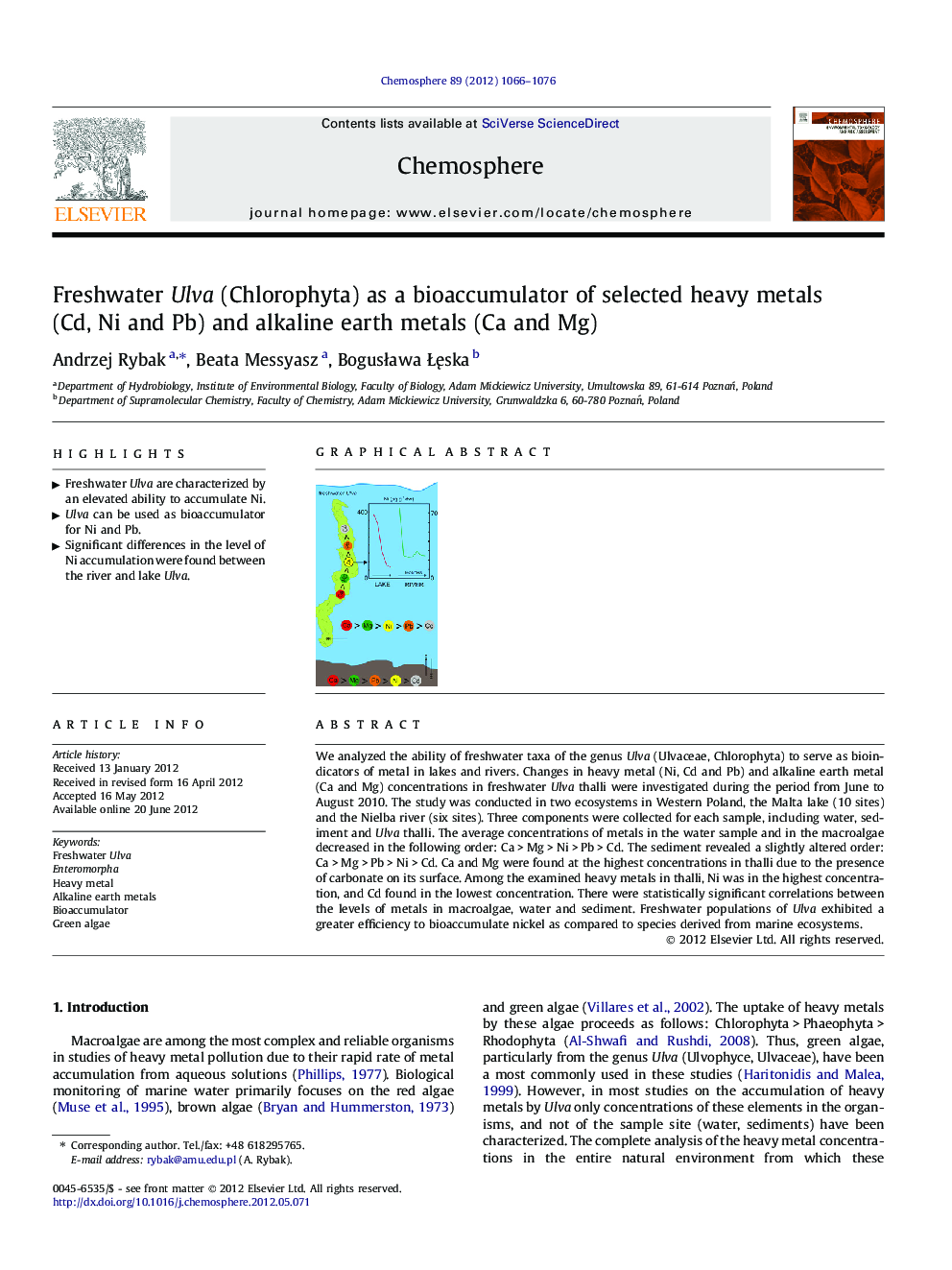| Article ID | Journal | Published Year | Pages | File Type |
|---|---|---|---|---|
| 4409818 | Chemosphere | 2012 | 11 Pages |
We analyzed the ability of freshwater taxa of the genus Ulva (Ulvaceae, Chlorophyta) to serve as bioindicators of metal in lakes and rivers. Changes in heavy metal (Ni, Cd and Pb) and alkaline earth metal (Ca and Mg) concentrations in freshwater Ulva thalli were investigated during the period from June to August 2010. The study was conducted in two ecosystems in Western Poland, the Malta lake (10 sites) and the Nielba river (six sites). Three components were collected for each sample, including water, sediment and Ulva thalli. The average concentrations of metals in the water sample and in the macroalgae decreased in the following order: Ca > Mg > Ni > Pb > Cd. The sediment revealed a slightly altered order: Ca > Mg > Pb > Ni > Cd. Ca and Mg were found at the highest concentrations in thalli due to the presence of carbonate on its surface. Among the examined heavy metals in thalli, Ni was in the highest concentration, and Cd found in the lowest concentration. There were statistically significant correlations between the levels of metals in macroalgae, water and sediment. Freshwater populations of Ulva exhibited a greater efficiency to bioaccumulate nickel as compared to species derived from marine ecosystems.
Graphical abstractFigure optionsDownload full-size imageDownload as PowerPoint slideHighlights► Freshwater Ulva are characterized by an elevated ability to accumulate Ni. ► Ulva can be used as bioaccumulator for Ni and Pb. ► Significant differences in the level of Ni accumulation were found between the river and lake Ulva.
